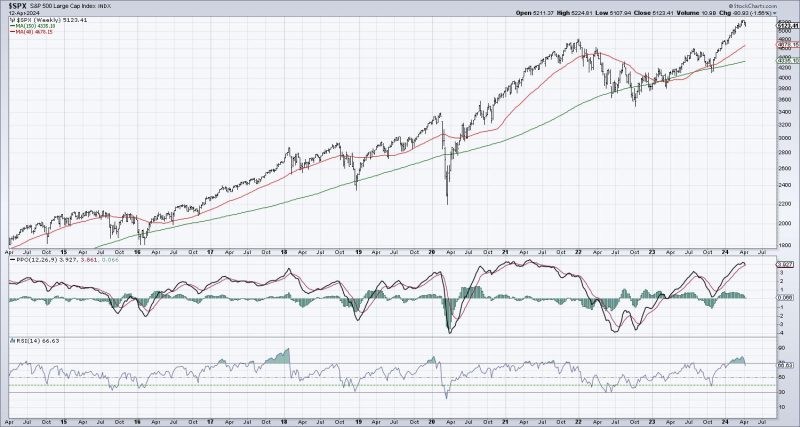Over the past few weeks, the S&P 500 index has been flashing major topping signals, causing concern among investors and analysts alike. Topping signals are indicators that suggest a potential reversal in the market trend may be imminent.
One of the key signals that has been observed in the S&P 500 recently is a divergence between the index price and key technical indicators such as the Relative Strength Index (RSI) and Moving Averages. A bearish RSI divergence can signal weakening momentum, indicating that the upward trend in prices may be running out of steam. Similarly, when the price of the index moves below key moving averages such as the 50-day or 200-day moving average, it is often seen as a bearish signal by technical analysts.
Another significant signal that the S&P 500 has been exhibiting is a pattern known as a double top. This pattern occurs when the index reaches a high point, retraces, and then fails to surpass its previous high before declining again. Double tops are considered to be bearish reversal patterns and often indicate that buyers are losing momentum and sellers may be gaining control.
In addition to technical indicators, market sentiment and macroeconomic factors are also contributing to the topping signals in the S&P 500. Rising inflation, concerns over the Federal Reserve’s monetary policy, and geopolitical tensions are all weighing on investor confidence and causing uncertainty in the market.
Despite the mounting topping signals, it is important for investors to exercise caution and not make hasty decisions based solely on technical indicators. Market trends can be influenced by a wide range of factors, and it is crucial to consider the broader economic context before making investment decisions.
In conclusion, the S&P 500 index is currently displaying several major topping signals that suggest a possible reversal in the market trend. Investors should closely monitor these indicators and stay informed about the evolving market conditions to make well-informed investment decisions. It is always advisable to consult with a financial advisor or conduct thorough research before making any significant changes to one’s investment portfolio.

